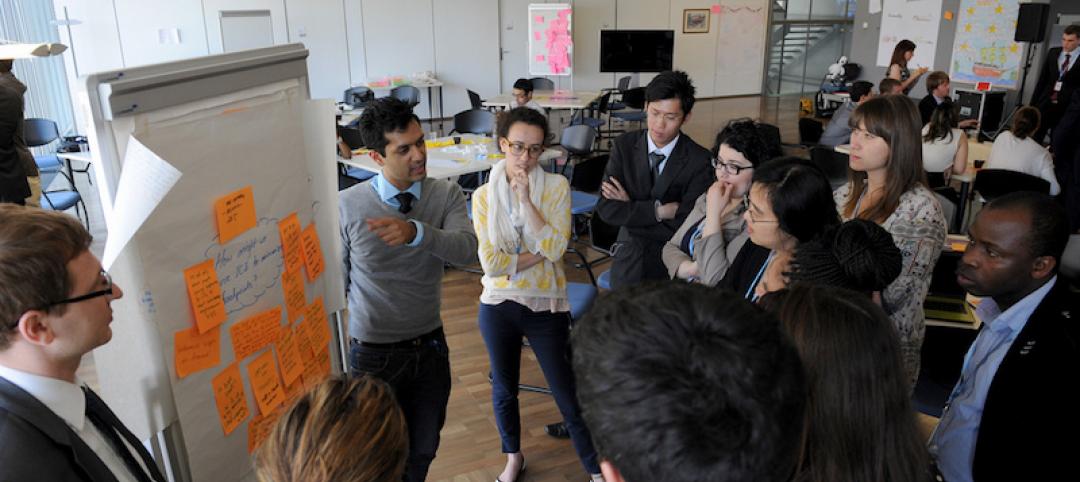Many design and construction firms have formal mentorship programs that pair new professional staff with veteran members of the firm. How effective is your firm’s mentoring program? Don’t have one? Maybe you should help get one started.
There are different forms of mentorship. In many AEC firms, mentoring occurs almost by accident. The new staff member somehow latches on to a more established person in the firm to seek advice and counseling on the ins and outs of the firm.
This form of mentorship gives you choice—you’re not getting stuck with someone you don’t like. But there’s no guarantee that the mentor will do a good job, or even that he/she is really interested in mentoring you. Read more …
At some AEC firms, particularly the larger ones, you may be assigned a mentor by the HR department, the CEO, or your department head. This has the advantage of being sanctioned by your firm and presumably tested over time. You can reasonably expect that the mentorship has a structure and that you will benefit from it. On the other hand, due to personality differences, gender issues, age or generational differences, etc., you may not be entirely comfortable with your assigned mentor. This could prove awkward in the everyday work environment.
You may want to have more than one mentor: one for specific advice about the workings of the firm—its strategic direction, what kinds of project work is most valued, what management is looking for from you, what gaps exist that fit you can fill to enhance your career growth path; the other for more general advice about your profession—how to get placed on professional society committees, how to obtain speaking engagements, what pro bono work can help your career, community service, alumni affiliations, etc. This person may be completely outside your firm but well-established in your profession.
Mentorships should have clear guidelines. You and your mentor should establish how frequently you will meet—once a week? Once a month? Quarterly?—and under what circumstances—coffee outside the office? A formal sit-down in the office? Should the discussion be business only, or can personal matters enter into the conversation? How long a period should the mentorship last? Should it be reevaluated once a year? How would it be ended? Should there be a written report at some point? Who would have access to such a report?
Some AEC firms have come up with interesting innovations in their mentorship programs. One firm we know assigns two mentors to every new employee. This helps you get feedback and advice from different perspectives.
Other firms are using two-way mentorships. Senior staff members work with younger or junior staff on subjects like how to improve client relations, how to bring in business, and how to get things done most effectively within the firm’s structure.
The protégés then work with their senior counterparts on solving problems that they’re more comfortable with, such as how to implement new software, or how to use the latest AEC-industry apps.
An interesting approach we recently learned about through one of our clients is for you and your mentor to take responsibility for a specific task that contributes to the firm's betterment. It could be a better way to catalog standards in the firm’s library, or the development of a new presentation prep technique, or rethinking the marketing strategy for a studio.
What if you are asked to become a mentor? My advice: Think carefully before agreeing to do so. Mentorship is a serious responsibility. Your protégé’s career can and probably will be affected by the quality of the mentoring you provide.
But mentoring, done right, can give you visibility to climb in your career—and for your protégé as well. You’re both working hard for your individual improvement and the firm’s betterment.
Ahmed Kurtom is a professional engineer and Managing Principal of Design Force, a Washington, D.C.–based firm specializing in career placement opportunities for AEC professionals.
For a FREE 100% CONFIDENTIAL resume review by an experienced Design Force hiring manager, email your resume to: careers@designforcesolutions.com - SUBJECT LINE: Free Resume Review/BDC090816A
More from Author
Design Force | Feb 22, 2017
Millennials: 3 ways to position yourself as an emerging design professional
Millennials are poised to dominate the U.S. workforce.
Design Force | Sep 29, 2016
Manners Still Matter in Advancing Your AEC Career
A well-written thank-you note can land you the job you've been looking for.
Design Force | Sep 29, 2016
How to Get Your Best AEC Job in a Virtual World
Top tips for getting that AEC-industry job you’ve always dreamed of in today’s virtual world.
Design Force | Sep 29, 2016
How to Stand Out to Get That AEC Industry ‘Dream Job’
In searching for your AEC dream job, it's important to differentiate yourself in the hiring process. Here are 6 tips to help you do just that.










